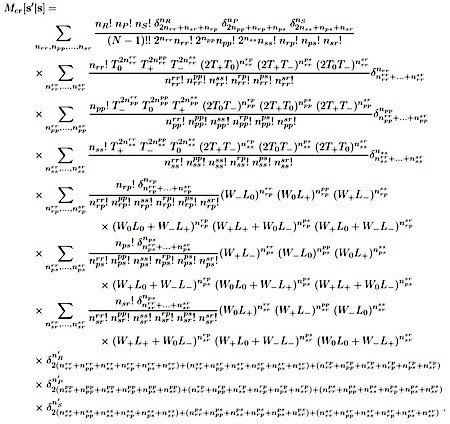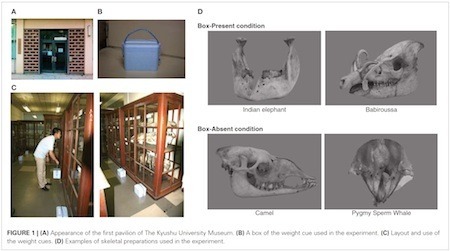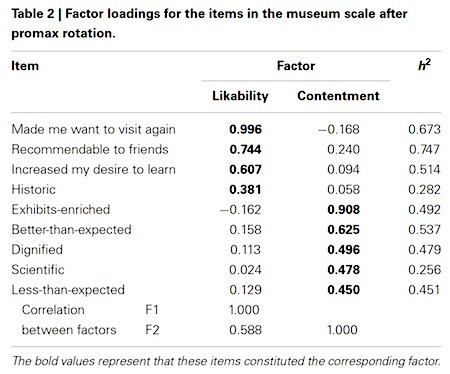Marc Abrahams's Blog, page 407
May 3, 2014
Wall on Coots’ Consumption of Gull Droppings
Wall was a master an analyzing British bird droppings, as is evident in this study:
“Coots and other birds eating goose- and gull-droppings,” T. Wall, British Birds. Vol. 76, no. 9, 1983, pp. 410-411.

May 2, 2014
Journey to the centre of an apple
Join us on a highly-magnified “[...] exhilerating [sic] journey through an apple.” [courtesy MeBioS, KU Leuven, The Netherlands]
“This movie shows the microstructure of an apple and was rendered from (microfocus) CT images of an apple. The images of the entire apple were obtained with an X-ray CT system at K.U.Leuven (MTM) and the images of the tissue were obtained at the ID19 beamline at the European Synchrotron Radiation Facility at 5 micrometer pixel resolution.”
Further details can be found in: ‘Three-Dimensional Gas Exchange Pathways in Pome Fruit Characterized by Synchrotron X-Ray Computed Tomography ‘ (Plant Physiology, June 2008, Vol. 147, pp. 518—527)
Bonus [1]: (Apple™-centred) A reminder of a costly and contentious court case :
Bonus [2]: (journey-to-the-centre centred) A highly-magnified food-related illustration by Édouard Riou from the novel “Journey to the Centre of the Earth” by Jules Verne.

Rock/Paper/Scissors/Equations
If you like equations, here’s just part of the fun you’ll find in the newly published paper “Social cycling and conditional responses in the Rock-Paper-Scissors game” (arXiv:1404.5199):
(Thanks to Florian Gallwitz for bringing this to our attention.)

May 1, 2014
A partial history of inside-the-shell egg scrambler inventors
One would hope that the inventors of the ballyhooed “Golden Goose” device that scrambles eggs inside their shells would acknowledge an intellectual debt to Ron Popeil, whose inside-the-shell egg-scrambler was heavily advertised on American TV several decades ago. The devices operate on different principles, but are clearly stops on the same technological history highway.
Mr. Popeil is so far reacting to the Golden Goose announcements with gentlemanly good wishes, on Twitter:
Here’s Mr. Popeil’s commercial, preserved on a portion of the Internet called “YouTube”:
Mr. Popeil, one of the era’s most prolific inventors, was awarded a 1993 Ig Nobel Prize in the field of consumer engineering, for redefining the industrial revolution with such devices as the Veg-O-Matic, the Pocket Fisherman, Mr. Microphone, and the Inside-the-Shell Egg Scrambler. [REFERENCE: "The Salesman of the Century : Inventing, Marketing, and Selling on TV: How I Did It and How You Can Too!"]
Here is a promotional video for the new, non-Popeil invention:
BONUS: An old appreciation of an Ig Nobel-winning gadgeteer
BONUS: The wisdom of Ig Nobel winner Ron Popeil
BONUS [Unrelated, about a very different Ig Nobel Prize winner who, among many other things, made a commercial that harkens to the style of some of Mr. Popeil's most riveting commercials]: The Yet Still Further Continuing Adventures of Troy (Chapter 310)

Weight lifting for museum visitors: What is its effect?
This study adds to our knowledge of the effect of weight lifting on people who visit museums:
“Weight lifting can facilitate appreciative comprehension for museum exhibits,” Yuki Yamada, Shinya Harada, Wonje Choi, Rika Fujino, Akinobu Tokunaga, YueYun Gao and Kayo Miura, Frontiers in Psychology, epub April 14, 2014. (Thanks to investigator Neil Martin for bringing this to our attention.) The authors, at Kyushu University, Fukuoka, Japan, explain:
“[We] tested whether experiencing a weight during museum exhibit appreciation affects the beholders’ satisfaction and recognition memory for the exhibits. An experiment was performed at a museum exhibiting skeletal preparations of animals…. In the cued condition, participants were asked to lift up the weight stimuli during their observation of the four exhibits. In the uncued condition, participants observed the exhibits without touching the weight stimuli. After observation of the exhibits, the participants responded to a questionnaire that measured their impressions of the exhibits and the museum, and performed a recognition test on the exhibits. Results showed that memory performance was better and viewing duration was longer with weight lifting instruction than without instruction.”
Here’s further detail from the study:

Greg Jensen joins Luxuriant Flowing Hair Club for Scientists (LFHCfS)
Greg Jensen has joined the Luxuriant Flowing Hair Club for Scientists (LFHCfS). He says:
I just yesterday completed my doctoral defense at Columbia University (the photo is from the toast, in fact) and will be beginning a post-doc here in June.
I am a psychologist with interests in behavioral economics, comparative cognition, and statistical methods. These disciplines have provided no traction on quantitative evaluation of the behavior of my hair (upon which no price may be placed), or of its cognitive capacities (which are incomparable)..
Greg Jensen, Ph.D, LFHCfS
Post-doctoral researcher
Dept. of Psychology
Columbia University
New York, New York, USA


How Starbucks turns old coffee and old muffins into laundry detergent
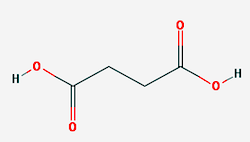 “Starbucks turns coffee grinds and old muffins into laundry detergent“, says a second-hand report in the journal Focus on Surfactants [volume 2013, issue 3, March 2013, page 3]:
“Starbucks turns coffee grinds and old muffins into laundry detergent“, says a second-hand report in the journal Focus on Surfactants [volume 2013, issue 3, March 2013, page 3]:
“The method involves using a mixture of fungi to help break down the carbohydrates in the stale baked goods into simple sugars. The blend is then fermented in a vat where bacteria convert the sugars into succinic acid [the structure of which is pictured here]…

April 30, 2014
When you need to breathe, not just any pen will do
Ball point pens are not all equivalent, suggests this emergency-medical study:
“Airflow efficacy of ballpoint pen tubes: a consideration for use in bystander cricothyrotomy,” David Owens, Ben Greenwood, Alistair Galley, Alun Tomkinson, Sarah Woolley, Emergency Medicine Journal, 2010;27:317-320. (Thanks to investigator @MsCelsius for bringing this to our attention.) The authors, at Princess of Wales Hospital, Bridgend, Wales, University Hospital of Wales, Cardiff, and Bristol Royal Infirmary, Bristol, UK, report:
OBJECTIVE To examine the suitability of commonly available ballpoint pens as a substitute emergency tracheostomy tube.
METHODS commonly available ballpoint pens were examined and compared against two standard cricothyroidotomy sets. The pens were evaluated for dimensions, speed of construction of a temporary tracheostomy tube and airway resistance with differing flow rates.
RESULTS Internal diameters of the pens varied considerably. Time taken to construct a temporary tube ranged from 3 to 170 s, and in the majority of pens the airway resistance increased dramatically as the airflow rate increased.
CONCLUSION Contrary to popular belief, the majority of ballpoint pens appear unsuitable for use as a substitute tracheostomy tube. In this study only two pens fulfilled the criteria for use: the Baron retractable ballpoint and the BIC soft feel Jumbo.
NOTE: Both of those recommended kinds of pens are now rather difficult to find (perhaps as a result of hordes rushing to stock up, after reading the study?)

Head nods of the third kind
Previous research on human head nodding has shown that :
“[...] head nods can function in a range of ways either as initiating actions designed to elicit particular responses from recipients (‘first position’), or as responding actions (‘second position’).”
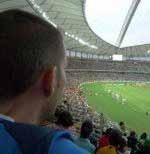 But, as recently as 2011 a new variant of head nod was described in the literature – the so-called ‘Third Position’.
But, as recently as 2011 a new variant of head nod was described in the literature – the so-called ‘Third Position’.
Professor Kevin Whitehead , BSc, BSc (Hons), MSc, MA, PhD (of the Psychology dept at the University of the Witwatersrand, Johannesburg, South Africa) examines the possibilities of a third type of head nod :
“[...] that embodies features of the first two types, and may be designed to register receipt and acknowledgment of ‘dispreferred’ news.”
The professor notes that there is still room for further research regarding other possible variants and fine-grained sub-variants of as yet undescribed head nod classifications :
“It is important to note that these findings should not be seen as providing an exhaustive typology of all possible different uses of nods in this type of sequential position, but rather as a description of some systematic ways in which they can be used.”
The paper ‘Some uses of head nods in “third position” in talk-in-interaction’ is published in the journal Gesture, 11:2. 2011. iii, 138 pp. (pp. 103–122), and may also be read in full here.

April 29, 2014
Danish celebration of the Luxuriant Flowing Hair Club for Scientists (LFHCfS)
The Danish magazine Magisterbladet published a celebration of the Luxuriant Flowing Hair Club for Scientists (LFCHfS).
BONUS: The magazine looked at the Ig Nobel Prizes two years ago, on page 14 of their November 2012 issue.

Marc Abrahams's Blog
- Marc Abrahams's profile
- 14 followers



